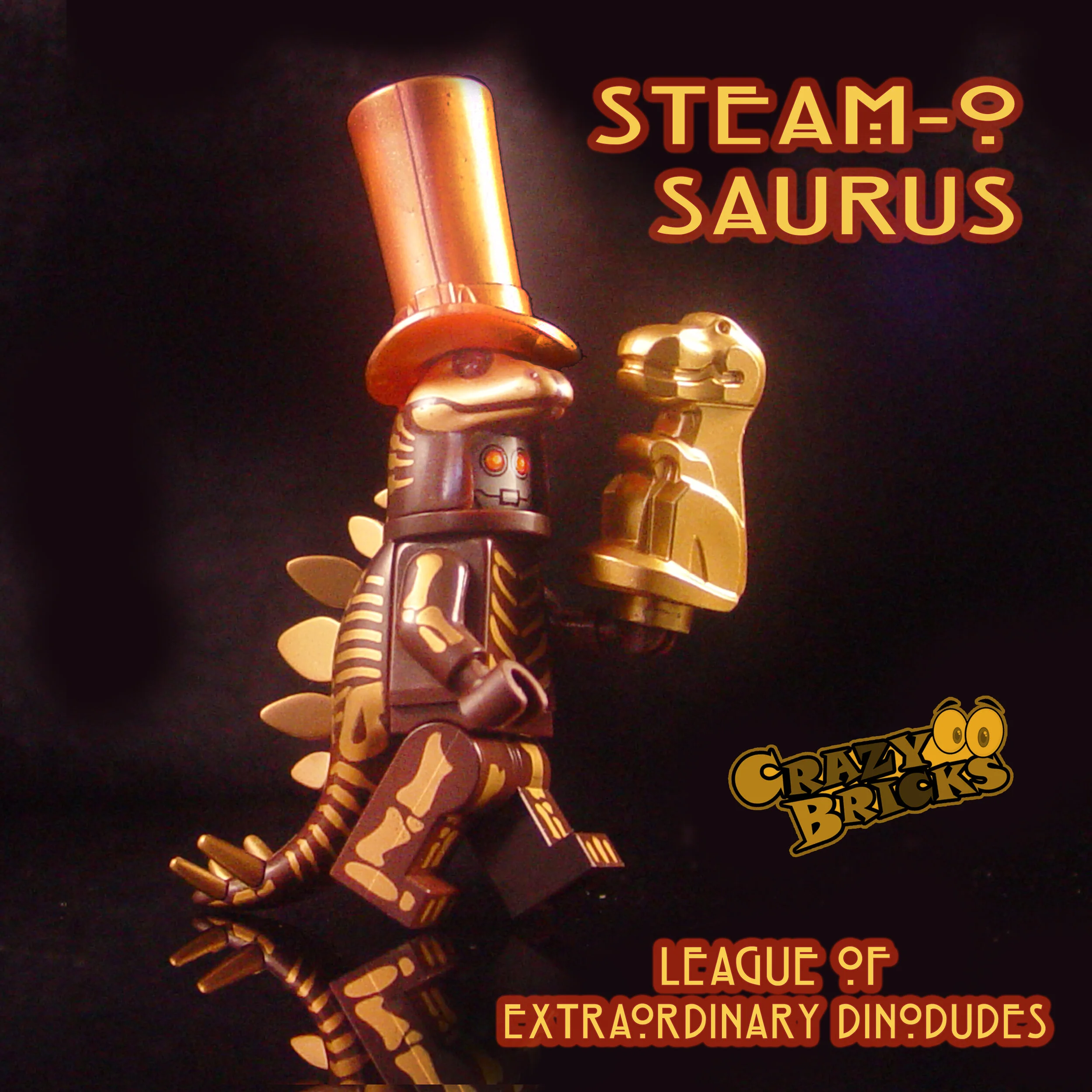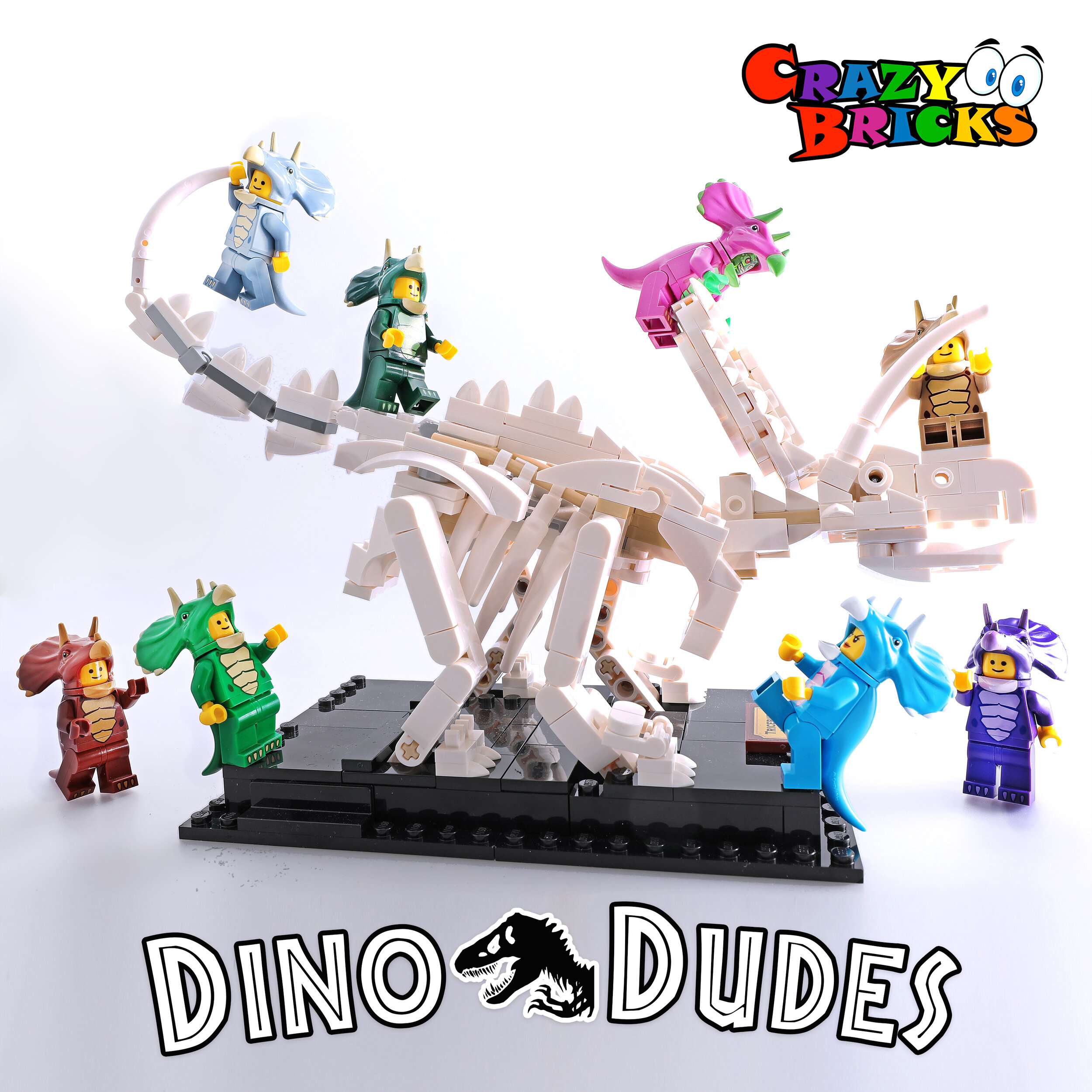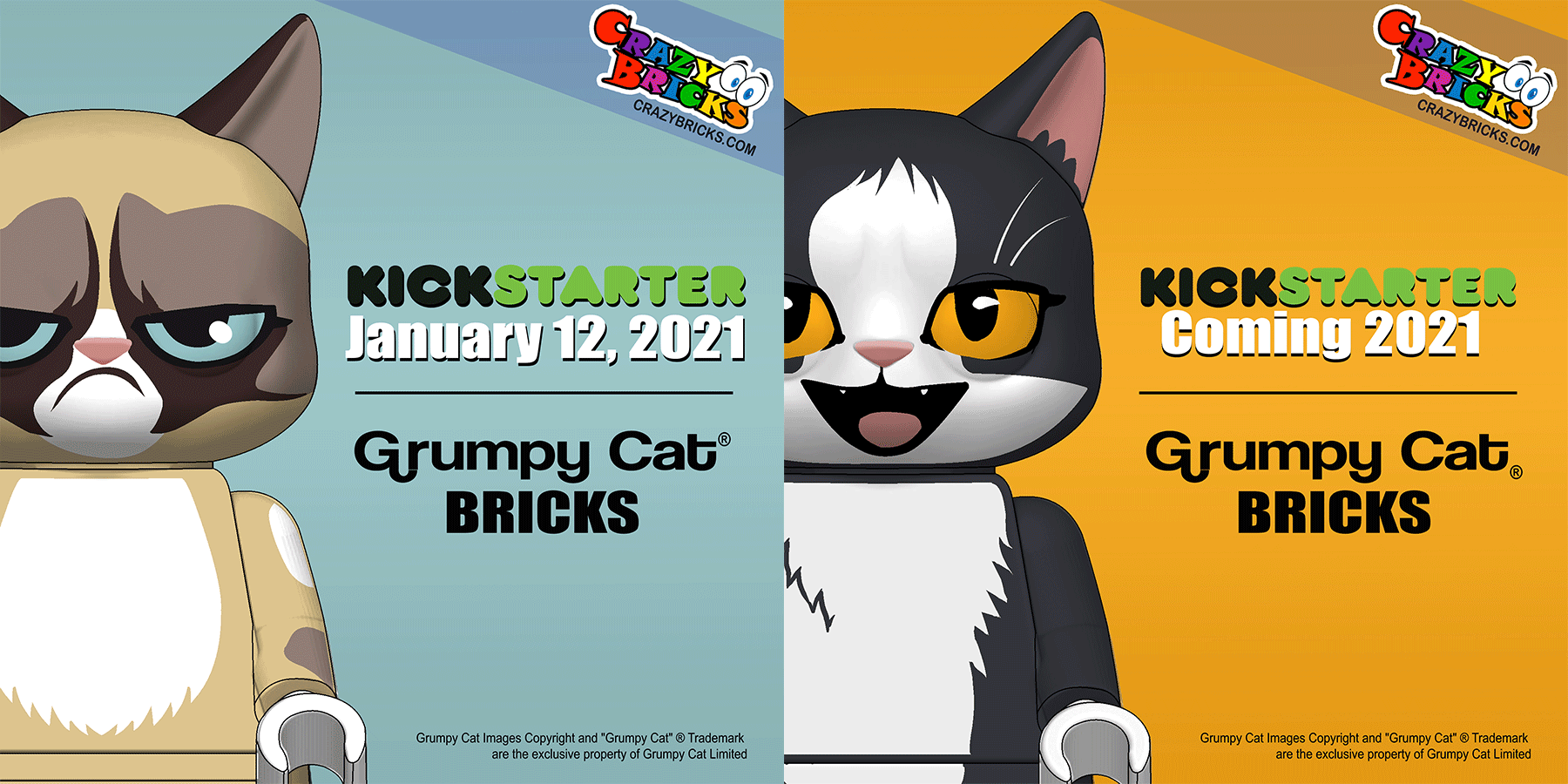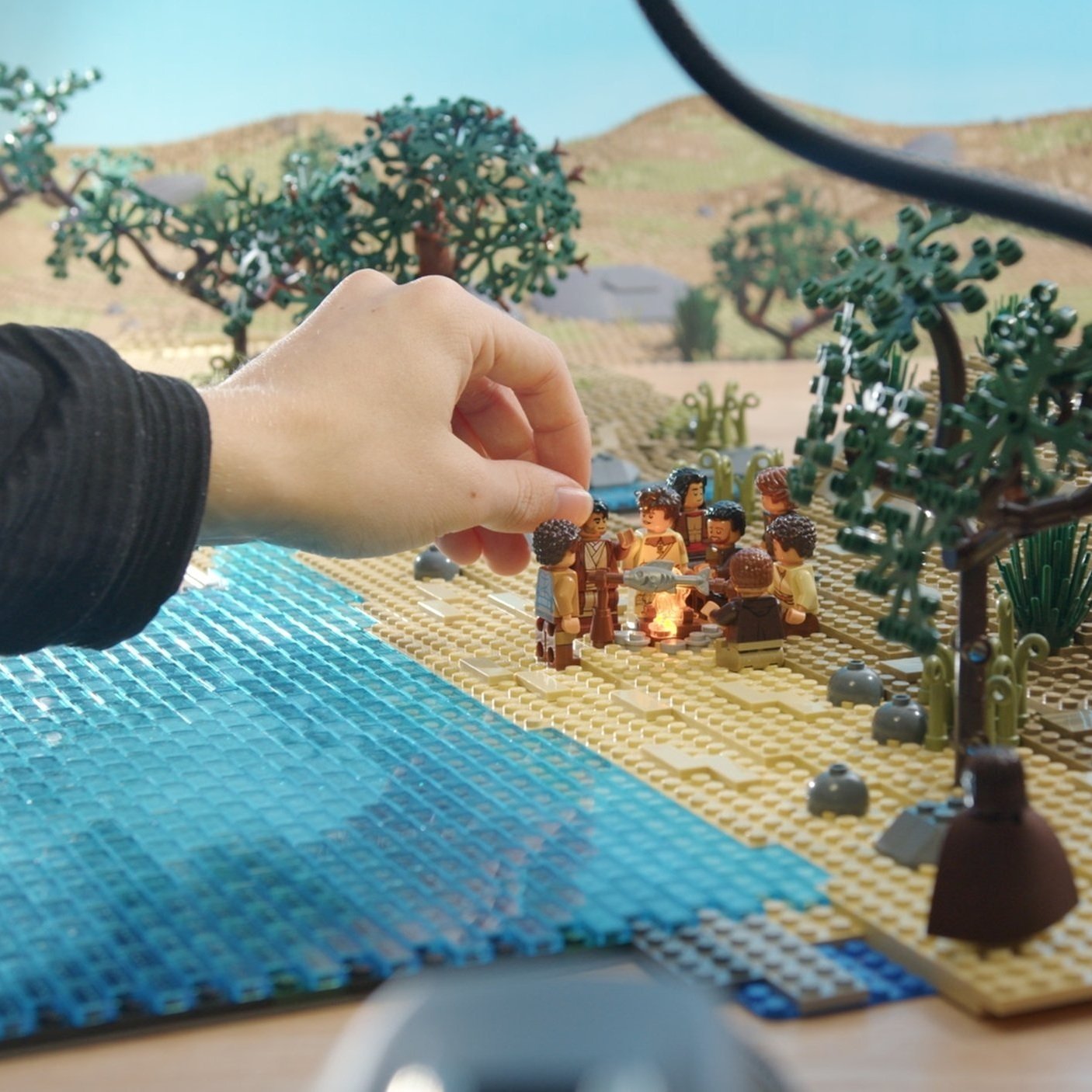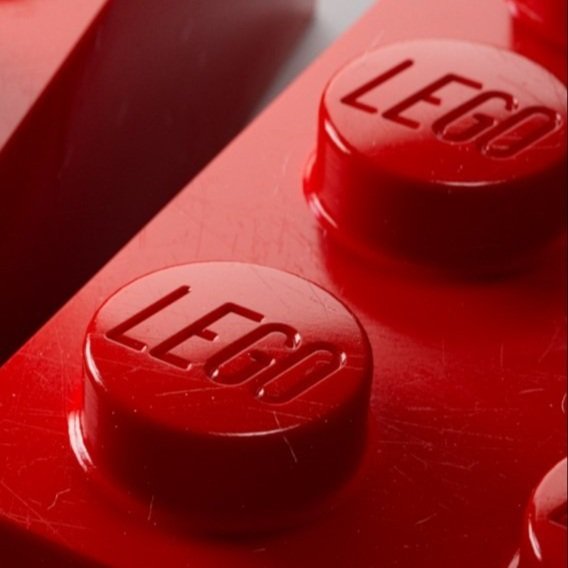Diving Deep with Dino Dudes: An Interview with Guy Himber
/The LEGO community encompasses many people from designers in Billund to builders far and wide and thousands of enthusiasts in between. At LEGO fan conventions, you get a good cross-section of where all these people come together with builders, photographers, resellers, printers, and engravers sharing their passion projects. One of the frequent faces at these events is Guy Himber of Crazy Bricks who I got nerdy with chatting about his recent project of prehistoric proportions, Dino Dudes.
Dave Schefcik: Thanks for chatting with BrickNerd! I don’t remember a concept catching on quite as fast as Dino Dudes. I was wondering where the whole Dino Dudes concept started?
Guy Himber: Dino Dudes actually started as a sketch on a cocktail napkin. I knew I wanted to do something to better feature the Crazy Arms design, and I loved the idea of some mad inventor stretching out his wings and attempting to dive off a tall tower and gliding away to an adventure. Also, I had dinosaurs on my wish list of figure ideas for quite a while. In particular, I also wanted to do something akin to those inflatable T-Rex Halloween costumes you see all the time.
DS: Where did you go from that first sketch? Did you start imagining a whole collection or do you jump on starting production?
GH: The first step was actually to create some scaled concept art to provide a reality check for my design ideas. That way I could brainstorm some improvements and do some problem-solving. It is always better and faster to make your mistakes in the drawing stage, where a few pen strokes can be easily changed or compared against.
Then, it’s helpful to start exploring colors, taking it from a sketch to a full illustration. This is where you can start adding shading and imagining what the three-dimensional version would look like.
DS: How do you transform a two-dimensional drawing into a 3D model?
GH: We use various design and digital sculpting programs—my team and I create a 100% scaled accurate model of the 2D artwork. Then. we reality-check the design against the established minifigure parts it has to fit with to make sure the proportions and forms look good together. Most of the initial engineering is figured out at this stage in the accessory's development. For example, a challenging model might see four or more incarnations as we problem-solve and tweak the design. I also consider the ease to which the forms can be injection-molded, printed and other practical aspects of the part’s usage.
DS: Do you then 3D-print a test model or prototype? I assume it is too early to order an injection mold.
GH: Actually we 'grow' the STL files in a rapid prototyping machine. We generate these proto models to the highest level of material tolerances because we can see if the 3D model perfect enough to be approved. These expensive prototypes are near-identical in finish and measurements to the final brick-compatible accessory. Once the models are physically produced, they oftentimes reveal issues or considerations that the 2D and 3D models couldn't anticipate. After the second round of adjustments, we either finalize the piece or grow a second batch of prototypes. Time and budget permitting, we will often fully paint the prototypes by hand.
DS: Is this the stage when you photograph the models and share with the world what is coming?
GH: We have been fortunate enough to be friends with some of the best and most creative toy photographers in the world! They typically get to see and photograph our early models long before anyone else even knows about the project! As much as we think the models are amazing, they truly come alive when given over to the skilled eyeballs and special perspectives of such talented photographers. We’ve worked with Shelly (@shellycorbettphotography), Alan (@alanrappa), Marco (@the_aphol), Robert (@shundeez_official), and Astrid (@hey.light) who are all amazing at making them come alive.
DS: Injection-molding seems to be more of an art than a science, playing with temperatures, materials, injection points and more until you get a feasible result. What is the process like for you, and how expensive are the molds?
GH: When engineering injection-molded parts, you have to consider the costs and production ease of the items you wish to mass-produce. The molds can cost upwards of $5,000 to $10,000 each—and any mistakes you make will be reproduced many, many times over. A minor design modification can suddenly increase or decrease the costs by a significant amount because of the scale. A lot of things can change in this stage which is why it is so hard to fully price out a project ahead of time.
DS: Speaking of price, you’ve utilized the crowdfunding platform Kickstarter for many of your projects. What benefits does it bring as you are gathering enough capital to get into production?
GH: Crowdfunding does several things. It gets us some much-needed financing to move ahead with the high-cost of injection molding, yes, but it also helps us take fans and the community on the journey with us. We get to forecast demand while at the same time sharing the project with the world and seeing the reaction. Dino Dudes has proved to be our most successful Kickstarter project yet. It hit record numbers of supporters and funding, which in turn “unlocked” stretch goals we had set like including different Dinos designs. This proved that there was demand and we could afford to make all five designs including the T-Rex, the Brachiosaurus, the Stegosaurus, the Triceratops and the Pterodactyl.
DS: Are there any drawbacks to crowdfunding?
GH: Success can be a blessing and an added burden, though most times that is a good problem to have. The community response was so amazing that we added new color options and new printing options—which is really cool but adds a lot of complexity in execution. It means we had to scale up, source more parts, figure out schedules for extended production and printing runs. Beyond fulfilling the initial Kickstarter pledges, we want to make some Dino Dudes available for general purchase too, which should be available in late February. Overall, success not only increases people’s expectations but the stress we have to deliver an amazing final product.
DS: What is the actual manufacturing process like once you get ramped up after the campaign?
GH: Our final designs are checked against the engineering programs, injection mold flow is optimized, and the long process of machining and tuning the plastic injection mold (or tooling) begins. This process takes a number of months to perfect and results in a number of “test shots” of the finished parts. In the final steps of mold approvals, the tolerances of the parts are perfected and the mold is polished to the correct finish. Once all of that is approved, the mold is finally ready to produce the production parts.
DS: Beyond injection-molding, the Dino Dudes campaign offered a number of printed parts as well. What goes into printing them with detail?
GH: Here’s a story that might illustrate the lengths we are going to that involve printing. We were lucky that Dino Dudes hit all of our stretch goals on Kickstarter, including the top-tier ‘Fossil Editions’ we had conceived. Those are versions in black with white bone printing to make them look skeletal and awesome. What we did NOT foresee was how many different surfaces would need to be printed to do the job right. I think we set some kind of a record by pad-printing on so many surfaces on each dino. And multiply that by five for each unique design! The Brachiosaurus alone has upwards of 20+ printing operations.
DS: That seems like quite the labor of love and that you spared no expense! Do you save all the materials to make future runs, or is the printing process more of a one-time-only investment?
GH: We save everything we can, but it is not easy to spin up additional injection or printing runs. When everything is running and in progress, it is much easier to add variations that we might be able to use in the future. That’s how a really special version of Dino Dudes came about. Considering all the printing in place and my love of Steampunk, how could I not make a small batch of the Fossil Edition dinos printed in GOLD? Hello Steampunk Dinos!
DS: How long will the entire process take from when you first imagined the concept to when the Dino Dudes are finally packaged, shipped and delivered?
GH: Once the factory production runs are completed and everything has been packaged, they are shipped to our warehouse where we start getting the individual Kickstarter orders ready to ship to our loyal supporters and friends. Dino Dudes are on target to start delivery at the end of January which will represent more than an entire year’s worth of work. I cannot wait until 1,400+ packages start arriving to amateur paleontologists and LEGO fans around the globe!
DS: Thank you so much for sharing the entire process with us and our fellow Nerds. Before you head off, when can we expect retail sales of Dino Dudes for those who weren’t involved in the crowdfunding campaign? And do you have any other awesome ideas ready to go to work on next?
GH: Dino Dudes should be available for retail sales at the end of February on our site (CrazyBricks.bigcartel.com). As to what is coming next, we are busier than ever! We are launching a new Kickstarter campaign today, so say hello to everyone’s favorite feline, Grumpy Cat! After that, Crazy Legs is our upcoming project that should change the way you pose your minifigures forever. And I’m pretty sure most dinosaurs these days get a sequel…
What concept would you like to see next from Crazy Bricks? Leave your thoughts in the comments below.
















